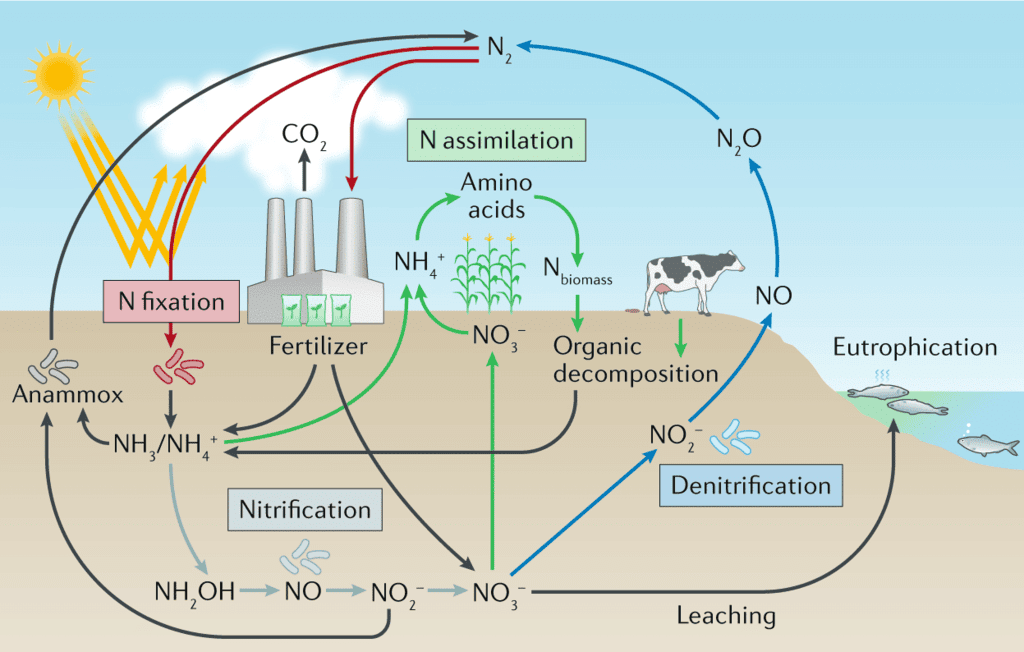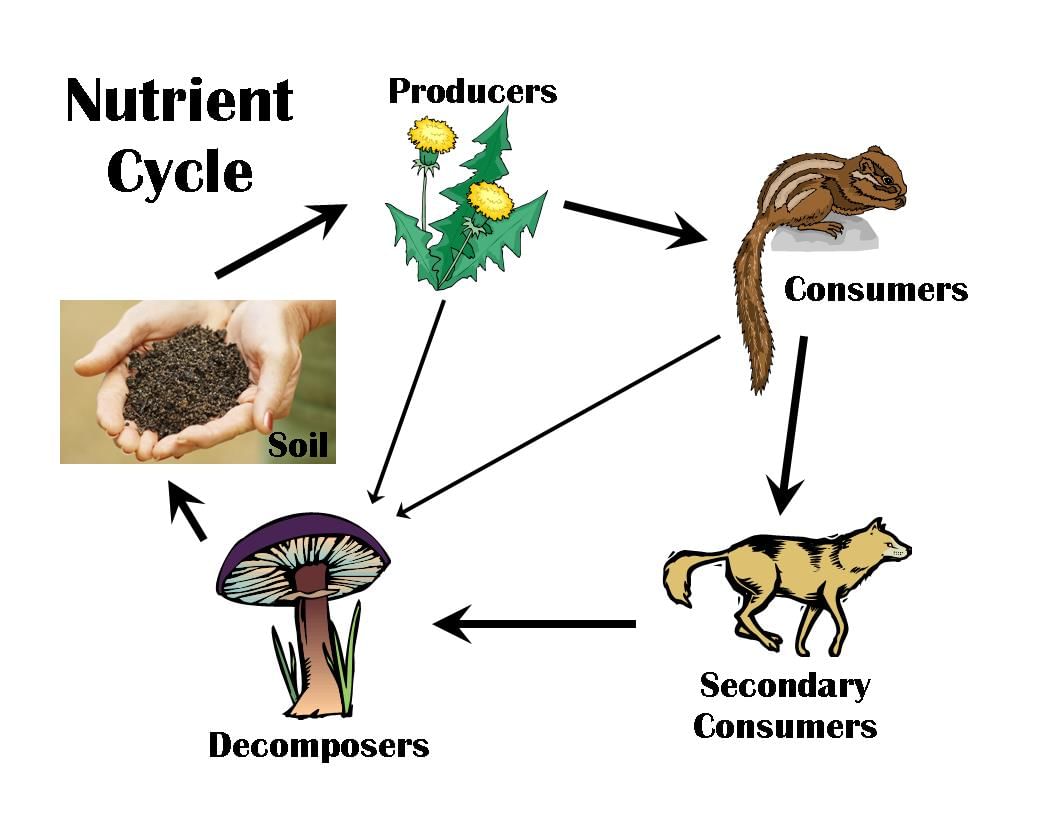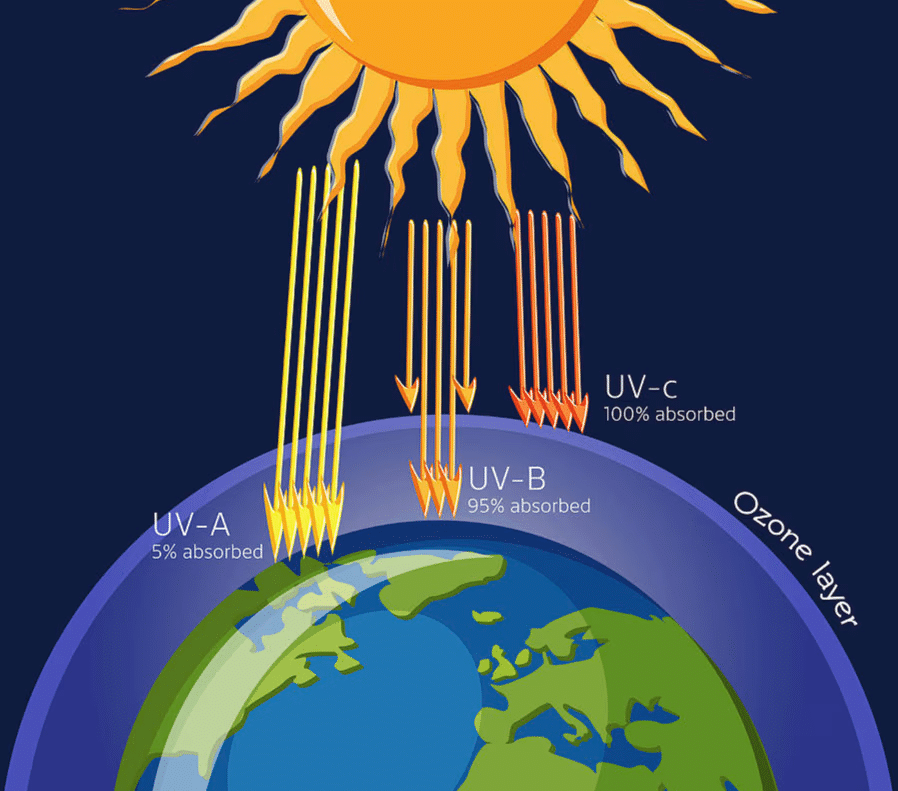Class 10 Science Chapter 13 Practice Question Answers - Our Environment
Fill in the Blanks
Q1: The process of conversion of atmospheric nitrogen into compounds usable by plants is called __________.
Ans: Nitrogen Fixation
Explanation: Nitrogen fixation is the process by which atmospheric nitrogen (N₂) is converted into ammonia or nitrates, which plants can absorb and utilize for growth. This occurs naturally through bacteria or industrially.
 Q2: The thin layer of atmosphere where weather changes occur is called the __________.
Q2: The thin layer of atmosphere where weather changes occur is called the __________.
Ans: Troposphere
Explanation: The troposphere is the lowest layer of the atmosphere, where clouds form, winds blow, and weather phenomena like rain and storms occur.
Q3: The primary source of energy for the water cycle is __________.
Ans: Sun
Explanation: The sun provides energy for evaporation, driving the water cycle by converting water from oceans, rivers, and lakes into vapor.
Q4: The process of separation of heavier and lighter components of petroleum is called __________.
Ans: Fractional Distillation
Explanation: Fractional distillation separates petroleum into its components (e.g., gasoline, diesel) based on their boiling points, using a distillation column.
Q5: The pollutants that are responsible for causing acid rain are __________ and __________.
Ans: Sulphur dioxide, Nitrogen oxides
Explanation: Sulphur dioxide (SO₂) and nitrogen oxides (NOₓ) react with water vapor in the atmosphere to form acids, which fall to the ground as acid rain, harming ecosystems.
Short Answer Questions
Q6:Explain the role of decomposers in the environment.
Ans: Decomposers break down dead organic matter, recycling nutrients back into the soil, thereby enriching it. They play a vital role in maintaining the nutrient cycle and ensuring a healthy ecosystem.
Q7: Differentiate between biodegradable and non-biodegradable substances.
Ans: Biodegradable substances can be broken down by natural processes into simpler substances, while non-biodegradable substances cannot be easily decomposed by natural means and persist in the environment for a long time.
Q8: Describe the greenhouse effect and its importance.
Ans: The greenhouse effect is the trapping of heat by certain gases in the Earth's atmosphere, like carbon dioxide. It helps to maintain a suitable temperature for life on Earth by preventing excessive heat loss into space.
Q9: How does deforestation affect the environment?
Ans: Deforestation leads to loss of habitat, soil erosion, disruption of the water cycle, and a decrease in biodiversity. It also contributes to climate change by reducing the number of trees that can absorb carbon dioxide.
Q10: Explain the process of eutrophication.
Ans: Eutrophication is the excessive growth of algae and plants in water bodies due to the presence of excess nutrients like nitrogen and phosphorus. This can lead to oxygen depletion, harming aquatic life.
Long Answer Questions
Q11: Describe the ozone layer. How does it protect life on Earth?
Ans: The ozone layer is a region of the Earth's stratosphere that contains a high concentration of ozone (O3) molecules. It absorbs most of the Sun's harmful ultraviolet (UV) radiation, preventing it from reaching the surface. This UV radiation can cause skin cancer, cataracts, and other health issues. Thus, the ozone layer plays a crucial role in safeguarding life on Earth.
Q12: Explain the various steps of the water cycle.
Ans: The water cycle involves processes like evaporation, condensation, precipitation, and runoff. Water evaporates from oceans and other water bodies, forms clouds through condensation, falls as precipitation (rain, snow, etc.), and eventually returns to water bodies through runoff. This continuous cycle maintains the availability of water for various activities on Earth.
Q13: Discuss the causes and effects of air pollution.
Ans: Air pollution is caused by emissions from vehicles, industries, burning of fossil fuels, and other human activities. It leads to respiratory diseases, global warming, acid rain, and degradation of air quality, impacting human health and the environment.
Q14: What are the major sources of water pollution? Explain the impact of water pollution on aquatic ecosystems and human health.
Ans: Sources of water pollution include industrial waste, agricultural runoff, sewage, and dumping of waste into water bodies. Water pollution harms aquatic life by depleting oxygen levels and causing diseases. It also affects human health when polluted water is consumed, leading to waterborne diseases.
Q15: How can individuals contribute to environmental conservation and sustainable development?
Ans: Individuals can conserve energy, reduce waste, practice responsible consumption, plant trees, and promote eco-friendly practices. By supporting sustainable development, using renewable resources, and reducing their carbon footprint, individuals can collectively make a positive impact on the environment and ensure a better future.
|
80 videos|569 docs|80 tests
|
FAQs on Class 10 Science Chapter 13 Practice Question Answers - Our Environment
| 1. What are the main causes of environmental pollution? |  |
| 2. How can individuals contribute to environmental conservation? |  |
| 3. What is the importance of biodiversity in our environment? |  |
| 4. How do climate change and global warming affect our environment? |  |
| 5. What are some effective ways to reduce plastic usage in daily life? |  |
















